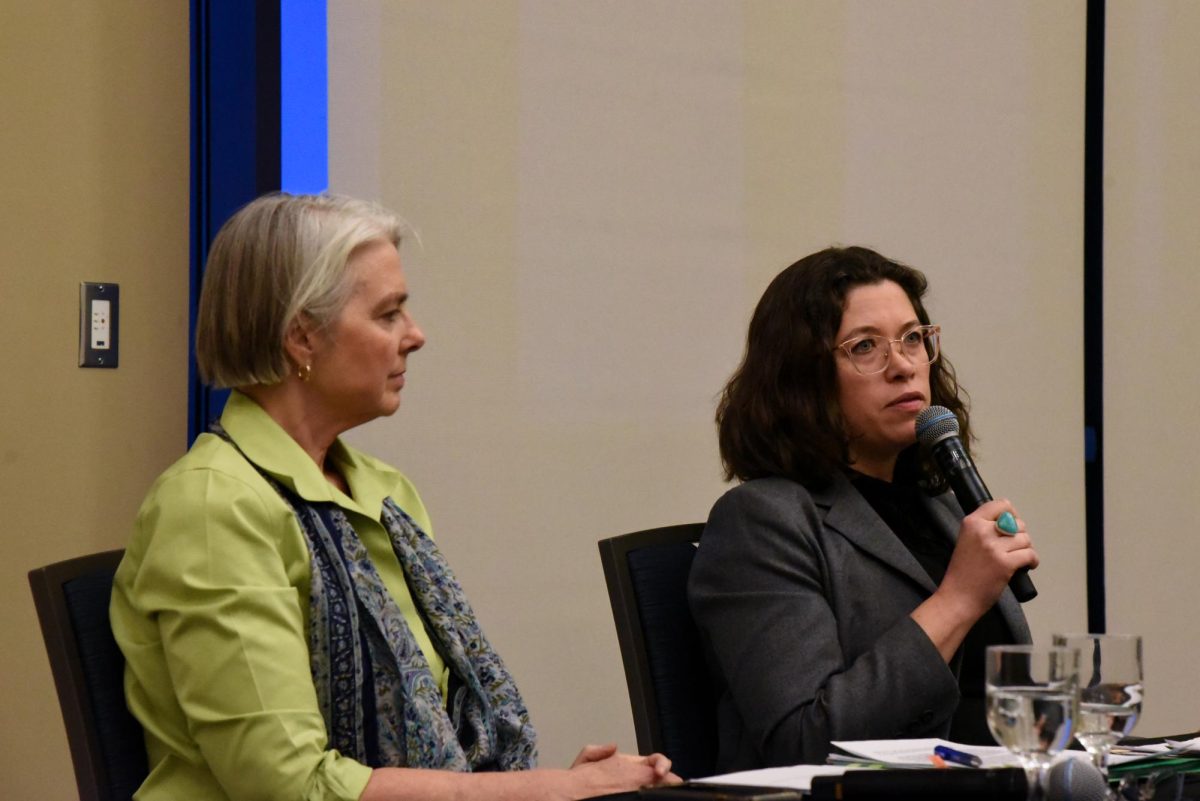As we trample down Burlington’s train tracks in the dark, it is clear that Zephyr does this often. The deftness with which he puts up his tag makes it apparent that he has plenty of experience in the art of “bombing.” “I’m not particularly proud of my art, I just doodle and noodle or whatever…,” Zephyr says humbly. “I’m definitely as self-motivated as you would expect a graffiti writer to be.” Zephyr, a.k.a. Andrew Witten, has been writing graffiti for the past 30 years. In the 1980s he attained international fame as part of the “graffiti-art” wave, while he secured regional infamy painting his name on New York subway trains. The streets and galleries have given Zephyr a unique perspective of graffiti culture, which he discussed on Oct. 25 in a packed Williams classroom. His multimedia presentation touched on aspects of graffiti’s evolution and ethical culture, which would prove to be a sensitive issue that evening. After opening the lecture up to questions from the audience, Zephyr was asked by UVM professor Frank Owen his thoughts regarding the health issues surrounding graffiti removal, which often requires the use of harmful chemicals. Zephyr responded, saying, “We have our job and they have theirs.” He attempted to field another question but Owen was dissatisfied, citing academic discourse as the reason for the graffitist’s visit. To this, Zephyr replied, “I am here for academic discourse but what is taking place here is academic discord.” The audience applauded. This exchange evokes a long-standing question about the ethics of graffiti: Is it a criminal act or artistic expression? Can it exist as both? If Zephyr had his way, he says, then every artist in the world would be able to sustain himself solely from his art. “I always think it’s sad when artists can’t pursue their creative endeavors because they’re ‘working for the man,'” he says. “[It] not only prevents them from being in the studio but it also sucks the creative impulses right out of a person.” Owen, a long-time artist and former New York City resident, has been offended by graffiti since its inception. “It [was] like dirty water rose up to a certain level, then drained away, and left graffiti in its place,” he says of the emergent graffiti of the 1970s. “Everything got coated with a kind of … bath tub rim of mark-making that just went all around the city … and it just looked like crap.” The wide spread of graffiti to which Owen refers came about, in part, as a result of the decrepit living conditions that plagued New York in the late 60s and mid 70s as poor city planning created massive urban decay. Graffiti became reclamation by urban youth of their neighborhood. Rather than faulting poor living conditions for graffiti’s expansion, Owen contends it is graffiti that perpetuates urban decline. “[If] somebody comes along and tags [your house] and then their buddies tag it … the value of your property is diminished immediately,” Owen said. This has a huge impact on a lot of poor people and I didn’t hear Zephyr talking about that at all. “If you’re a poor homeowner [and] somebody comes along and tags [your house] and then their buddies tag it … the value of your property is diminished immediately. This has a huge impact on a lot of poor people and I didn’t hear Zephyr talking about that at all.” Zephyr’s anxieties deal not with the legal or economic aspect, but with the take-over of graffiti by corporate advertisers. Mark Ecko and other have brought graffiti into the mainstream as a marketing device, and Nike has offered Zephyr multiple opportunities to work for them, which Zephyr says he turned down because of “questionable labor practices.” “Today, it’s the largeness of the cooption of the culture … that makes me nervous because there’s no personal synergy between the artist and the art department that’s hiring the artist, to basically shill the corporation,” Zephyr says. Zephyr acknowledged that he is, however, accountable for much of that cooption. “The decisions I made in the 80s were the decisions of a hungry 20-year-old. I have some regrets,” he admitted, “but I think I’m making up for it now because I feel I’ve gone back more to the roots of just doing graffiti for graffiti’s sake…not for some kind of dollar.” But for Owen, graffiti for graffiti’s sake is not positive facet of the culture. “[Zephyr] stood there and encouraged people in the audience to go into Burlington and Vermont and ‘get busy,'” Own said. If a student at the University of Vermont is the least bit environmentally sensitive they would reject that out of hand. “What pisses me off as much as anything is the idea that Zephyr was announcing that he’s entitled-and all writers are-entitled to paint trains and paint walls.” Back on the dark tracks, while he passed a school wall swathed in tags, Zephyr commented that he found it unfortunate that some people feel licensed to write on school walls. Perhaps Zephyr and Owen do not remain on opposite sides of the track after all.












